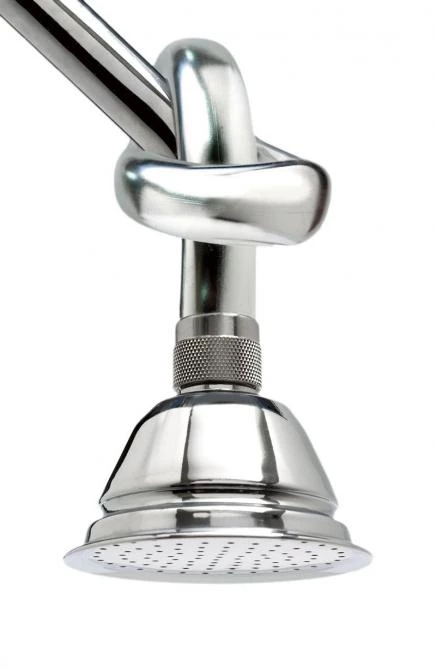November 17, 2006 With man’s mismanagement of the environment now firmly on the global agenda thanks to the growing evidence of global warming, water conservation is now an issue for everyone. Water, like money, is a very finite resource and if we don’t stop splashing it against the wall, we’re going to have serious long terms problems – all of us – not just the poor nations of the world but the rich nations too. So it was good news this week when we found that Australia’s national research agency, the Commonwealth Scientific and Industrial Research Organisation (CSIRO), has found a way to use a third less water when you shower, without diminishing the experience in any way. CSIRO scientists have developed a simple ‘air shower’ device which, when retrofitted to existing showerheads, fills the water droplets with a tiny bubble of air. The result is the shower feels just as wet and just as strong as before, but now uses much less water. The device is expected to retail for less than AUD$20 and be installed by householders. CSIRO is now seeking a suitable commercial partner to manufacture and market the technology globally. The CSIRO invention uses venturi technology.
The researchers, from CSIRO Manufacturing Materials Technology in Melbourne, say the device increases the volume of the shower stream while reducing the amount of water used by about 30 per cent. Given the average household uses about 200,000 litres of water a year, and showers account for nearly a third of this, the ‘air shower’ could help the average household save about 15,000-20,000 litres a year. If you extend this across the Australian population, that is an annual saving of more than 45,000 Olympic-sized swimming pools. Across the world, well, it’s a lot more and it might mean that the severe water restrictions being imposed in Australia’s major cities right now might not come to your town.
The Aerated Showerhead creates the sensation of having a full and steady stream of water even though the water is now more like a wet shell around a bubble of air.
Developed by a team led by Dr Jie Wu, the aeration device is a small nozzle that fits inside a standard showerhead. The nozzle uses a small Venturi tube – a tube for which the diameter varies, creating a difference in pressure and fluid speed. Air is sucked into the Venturi tube as a result of the partial vacuum created, causing air and water to mix, forming tiny bubbles within the water stream.
“The nozzle creates a vacuum that sucks in air and forces it into the water stream,” Dr Wu says.
“We make the water droplets in the stream hollow and the bubbles expand the volume of the shower stream.”
Small-scale experiments using the aeration device found that people detected no difference in water pressure, sensation, or overall perception of showering.
He expects the nozzle would cost less than AUD$20 and could be installed by householders.
While the general concept of using an aerated showerhead to save water is not new, the technology behind the CSIRO’s device is the result of almost two years of research and development, and CSIRO is ready to take the aerated shower head technology to the commercialisation stage.
“We have proven the concept of 30% water saving and we are now in search of a suitable commercial partner to manufacturer and market the technology globally, said Dr Dilip Manuel, the Business Development Manager of CSIRO’s Manufacturing & Materials Technology Section. “The technology still needs to be validated by larger sample of human trials plus developed as a marketable product.”
Interested parties should email Dr Manuel.




